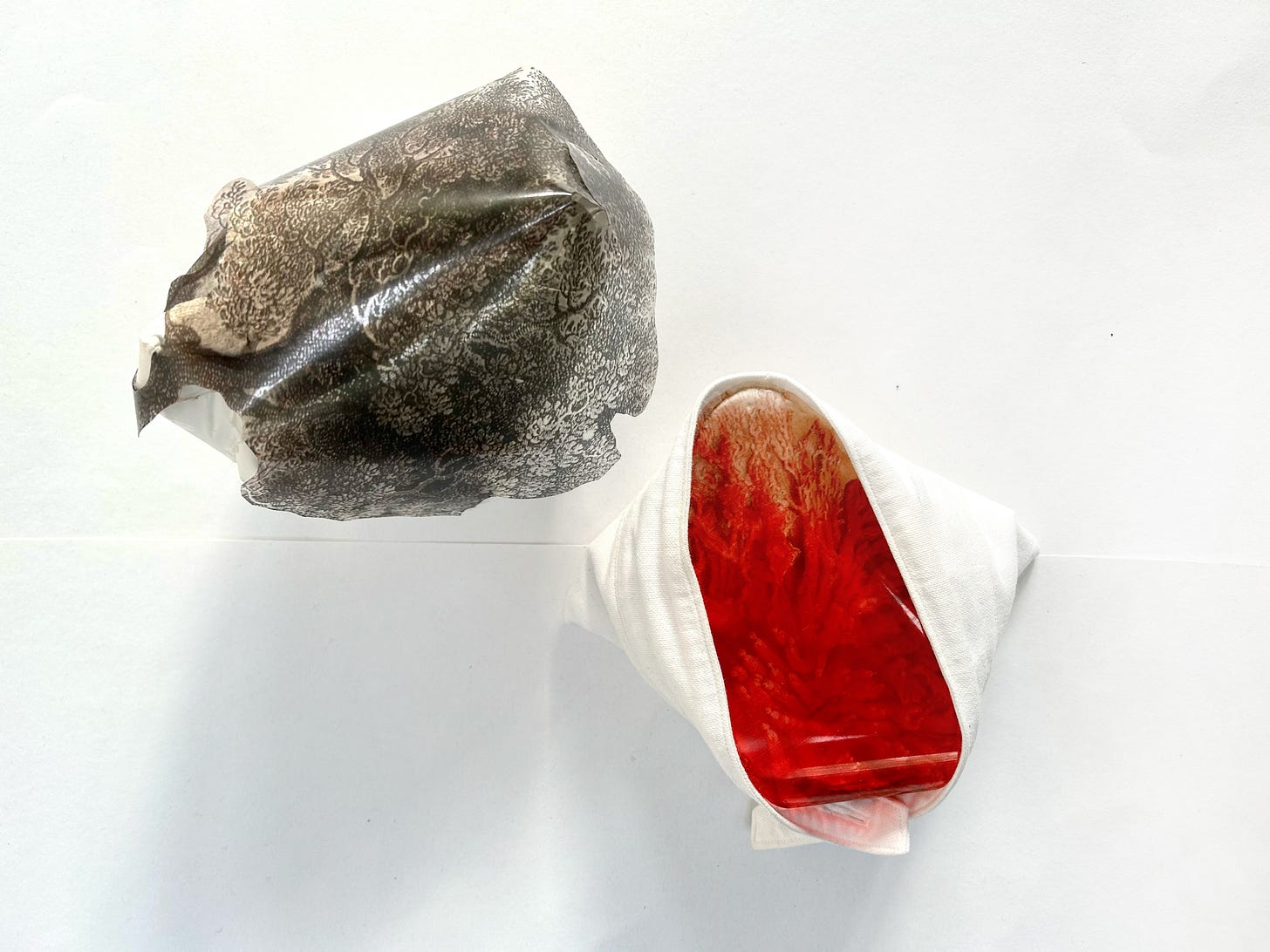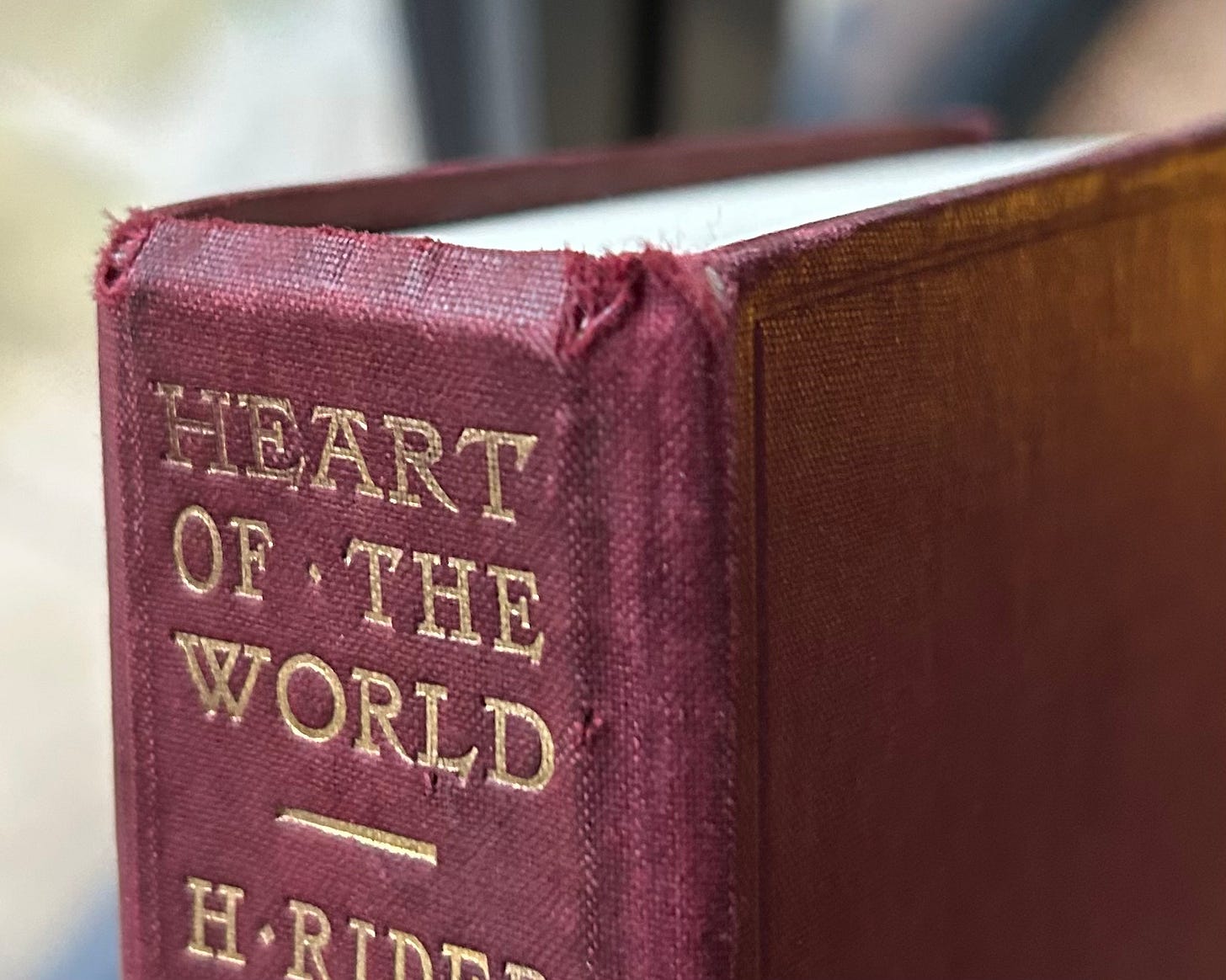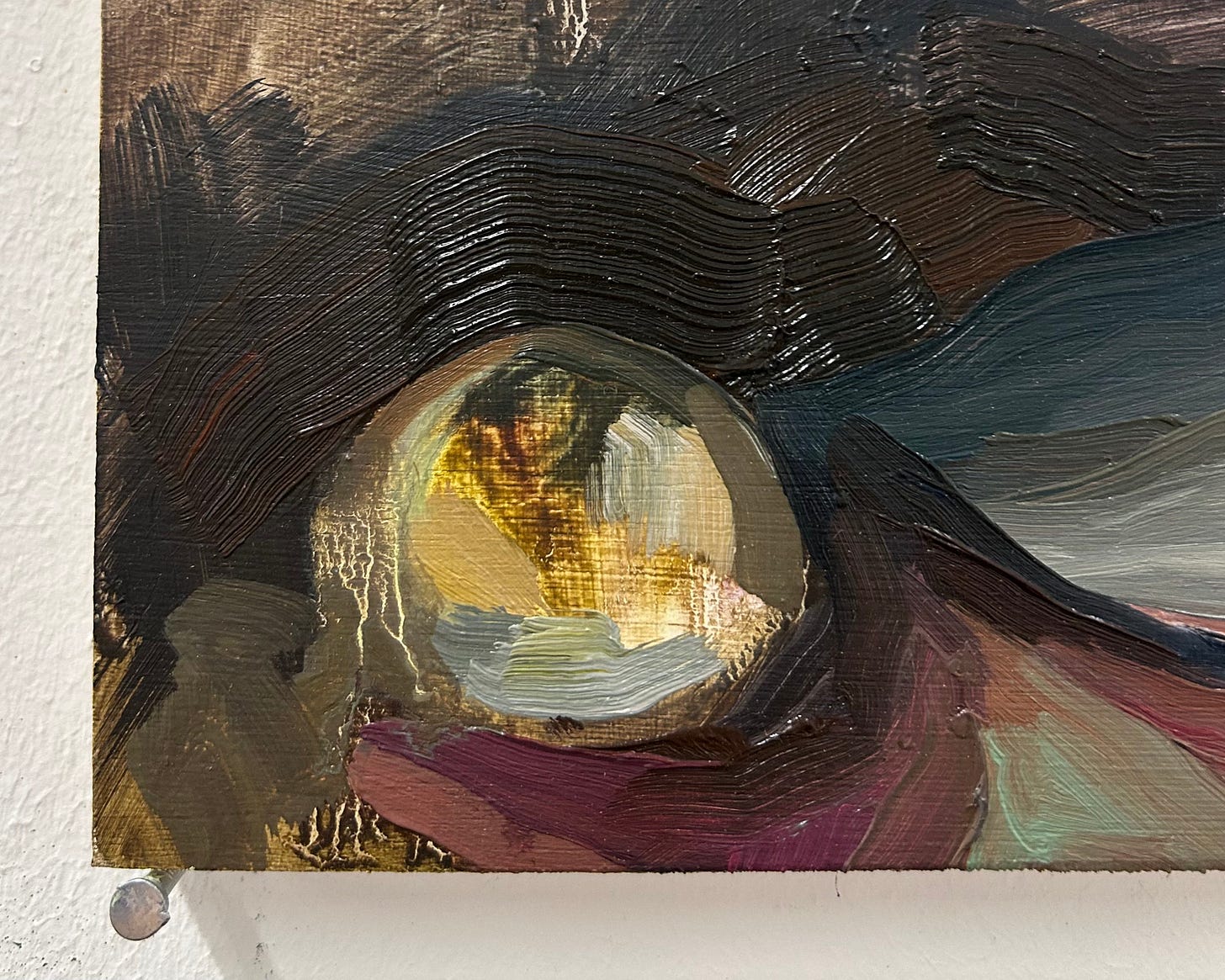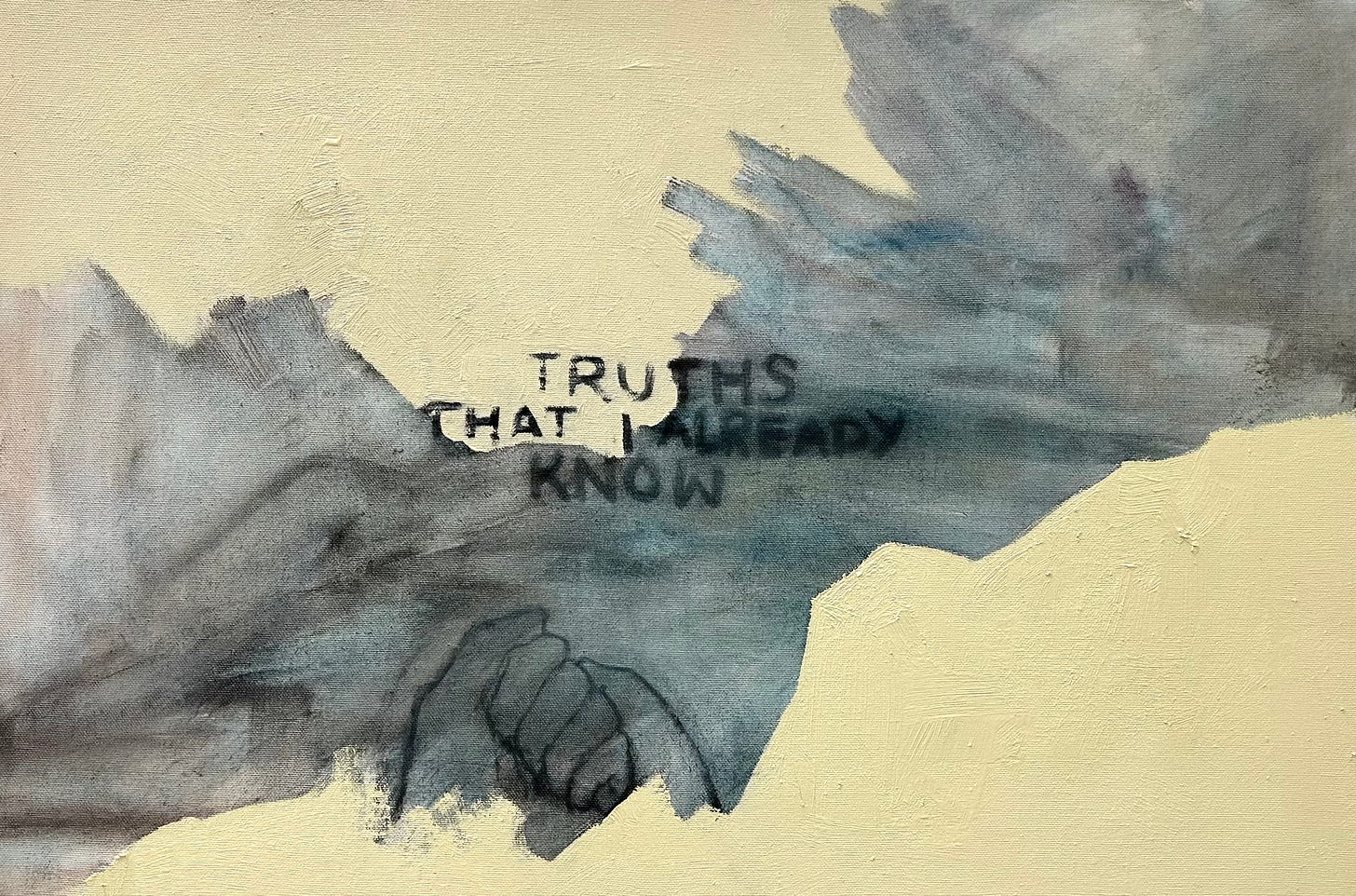As we look forward to 2025, I want to reflect on why this Substack matters to me and why I choose to continue it. Mum talks about different strands of creativity becoming tangled together in Wearable Intentions, and while I have lots of resolutions for 2025 in relation to my creative work, I think they’re all connected, so I start here with my intentions for The Everyday School of Art.
When my mum and I started The Everyday School of Art, I was in the process of transitioning from taking art as one of four subjects to studying Fine Art full-time. Substack was a place for me to navigate and share that journey. I hoped too that it might be helpful for others in similar positions to look back on. I think I did fall into somewhat of a rhythm when I started writing – my favourite posts are those that deal with current ideas, often in relation to my practical work. Because of the nature of my foundation course, I was moving through different ways of working quite often, and so when I did come to write, I felt I had something new to talk about.
I think sometimes when I don’t write, it’s partly because I have a fear that there won’t be anything new to say (‘if I settle into an idea now, then I won’t be in a new headspace in two weeks’ time’). I know that’s not true – there are subtle shifts in my thinking happening all the time. I can see it in the notes I write to myself in my journal, the Heart of the World, that what I’m interested in iterates and cycles and moves along every time I write. Even though my thoughts share the same central line, the way I see them or plan to action them moves. Conversations with people in the studios, my tutors, and the ideas we talk about in lectures and seminars always reposition my thoughts in a slightly new context. I think it could be helpful for me to practice articulating these shifts, and I know writing will challenge me to delve deeper into what’s triggering these smaller changes in context. While my journal genuinely feels, very personally, like the Heart of the World to me in the studios, I would like The Everyday School of Art to become a shared heart, for me and my Mum, and for you.
I would like to create a record of my creative journey, and of what is influencing me at each point in time. Tirzah Garwood said,
‘It is almost impossible to return to the garden of Eden of unselfconscious work when you have eaten the apple of knowledge.’
I know I can’t return to the exact way I thought about my work at the time of making it, because since then I’ve changed – I’ve had conversations, I’ve read, I’ve had new experiences. All these things recontextualise my work, and so even if I can’t return exactly to the headspace that I was in say a few weeks ago, or a year ago, I can at least record it as it was at the time. Coming back and rereading these posts often triggers something for me, or it reminds me of something that I was interested in that had been pushed to the side by something else. It acts as a bank.
I think my first term at Oxford was about getting used to the routines of the week that will be my structure for the next few years. It was about adjusting to the new environment and building relationships with new people. Now that I’ve laid some foundations, I hope that next term I can implement more time spent reading and writing and take more risks in the studio.
I want to hold myself accountable to writing regularly because I do think it’s helpful for my practice – in terms of clarifying ideas by trying to articulate them, but also creatively I think there’s an exciting potential for a blurred line between writing about my work, and the writing becoming my work. I’m interested to see where I might end up if the writing becomes more poetic. I’ve been enjoying using words in the studios within and towards my paintings, so how does that mean I use words here?
The Everyday School of Art could be a very rich place. I’m feeling inspired to be very genuine in it, to treat it with the vulnerability and care that we would treat our own hearts. Hearing people talk about their work with complete and utter honesty and vulnerability is such a powerful thing, and I think it has this incredible ability to build trust between us. It somehow ties us to each other. I’m so grateful for the types of relationships that I can build with other creative people in the studios at the Ruskin, and I’d like for The Everyday School of Art to do the same. I’d like to write from my core.
Wearable Intentions
When Rowan and I started The Everyday School of Art in September 2023, we followed an instinct that Substack might help us better articulate our thoughts and intentions with regard to our individual creative explorations. We also hoped our writing would resonate with people who were at similar stages in their lives (either just starting out as a young creative, like Rowan, or trying to find more time and space to return to personal creativity, like myself).









